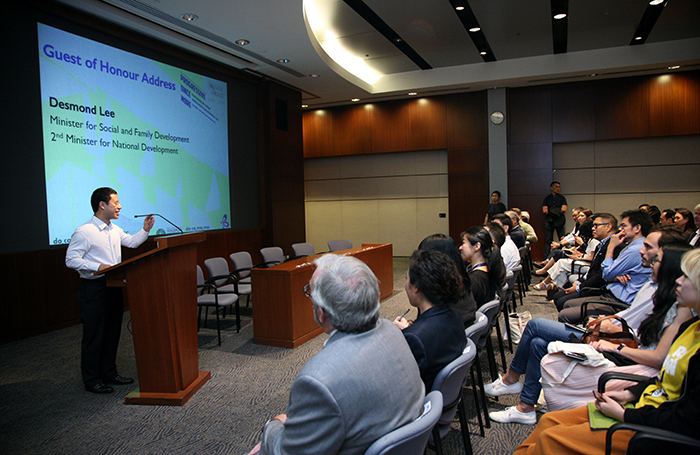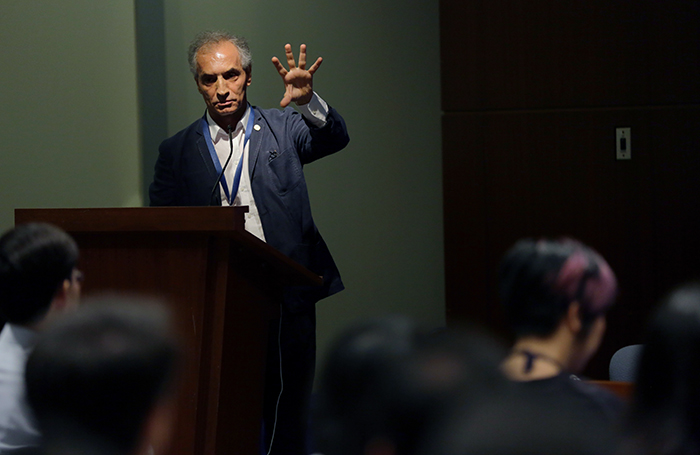At a time of immense upheaval for both the construction industry and the economy as a whole, it seems a pertinent moment to consider what we should bring with us into the new world.
Certain architectural styles, like the concrete monoliths of brutalism, have enjoyed renewed appeal thanks to the benefits - and nostalgia - of hindsight. Only now do we realise that structures long since demolished would today be celebrated. So are we in danger of overlooking the cultural contribution of modern architecture in favour of conserving the past?
This was one of many questions pondered at the latest mASEANa (modern ASEAN architecture) conference. It paired best practice in the UK and USA with the proposal of a new system for the ASEAN (Association of Southeast Asian Nations) region: one that recognises the value of modern architecture beyond economic returns.

Spanning mASEANa's eighth and ninth International Conferences, 'Progressive Once More: Rejuvenating Mid-Century Modern Architecture in Southeast Asia' tackled issues such as how we quantify the value of preserving a declining building and the viability of creating a system that makes conservation a natural progression while ensuring commercial viability for stakeholders.
At the eighth conference, held in Singapore, Dr Hossein Rezai (Web Structures) explained that the country's conservation issues include a lack of appropriate engineering skills as well as the introduction of new building codes that render old building codes - and, by extension, old buildings - “unsafe”.

Due to policy gaps, Singapore's post-independence buildings, designed by some of the country's most celebrated architects, are in danger of being bulldozed. As explained by speaker Malone-Lee Lai Choo (NUS Centre for Sustainable Asian Cities), it's a case of commerce over conservation.
Looking to the UK for answers, Elain Harwood of Historic England spoke of a listing system that once included only pre-1939 buildings. She also discussed the many modern British buildings which have successfully been preserved. Elain's talk can be watched below.
Highlighting the environmental implications of demolishing a building, Dr Rezai explained that the demolition of a typical high-rise emits 51,300 tonnes of carbon dioxide. This is equivalent to deforesting an area 50 times the size of Monaco (or 8.7 million trees).
Urban Splash's Mark Latham presented their five-phase plan to regenerate the listing of Park Hill Housing Estate in Sheffield, UK. Built in 1957, it was shortlisted for the RIBA Stirling Prize in 2013.
The project is rooted in community development and the completion of phase one reaped positive public benefits. Having come full circle, people are now proud of the brutalist estate which is seen as a piece of history to preserve. Mark's talk can be watched below.
Donovan Rypkema, of Heritage Strategies International, discussed the high cost of preserving modern heritage buildings versus the perceived value of new ones. To turn the tide, he suggests that governments offer incentives to developers to work on projects that preserve existing stock.
Especially in countries that have enjoyed foreign investment and experienced rapid development, the capitalistic principles of consumption and expansion are clear to see. The trend towards starting anew means that it may be easier and more cost-effective for developers to raze and rebuild rather than repair or repurpose.
Cities where gleaming steel and glass towers sit next to ancient monuments have perhaps served to polarise our ideas of old and new. However, preserving the best of modern architecture is more efficient, kinder to the planet and helps anchor the past to the present.
The mASEANa Project, initiated in 2015, is a travelling series of conferences and workshops advocating for modern architectural heritage in Southeast Asia. The conferences are coordinated by Docomomo Japan and the University of Tokyo and are supported by Docomomo International and ICOMOS International Scientific Committee for 20th Century Heritage. This piece focuses on mASEANa's eighth International Conference.
Words by Joe Terzeon









